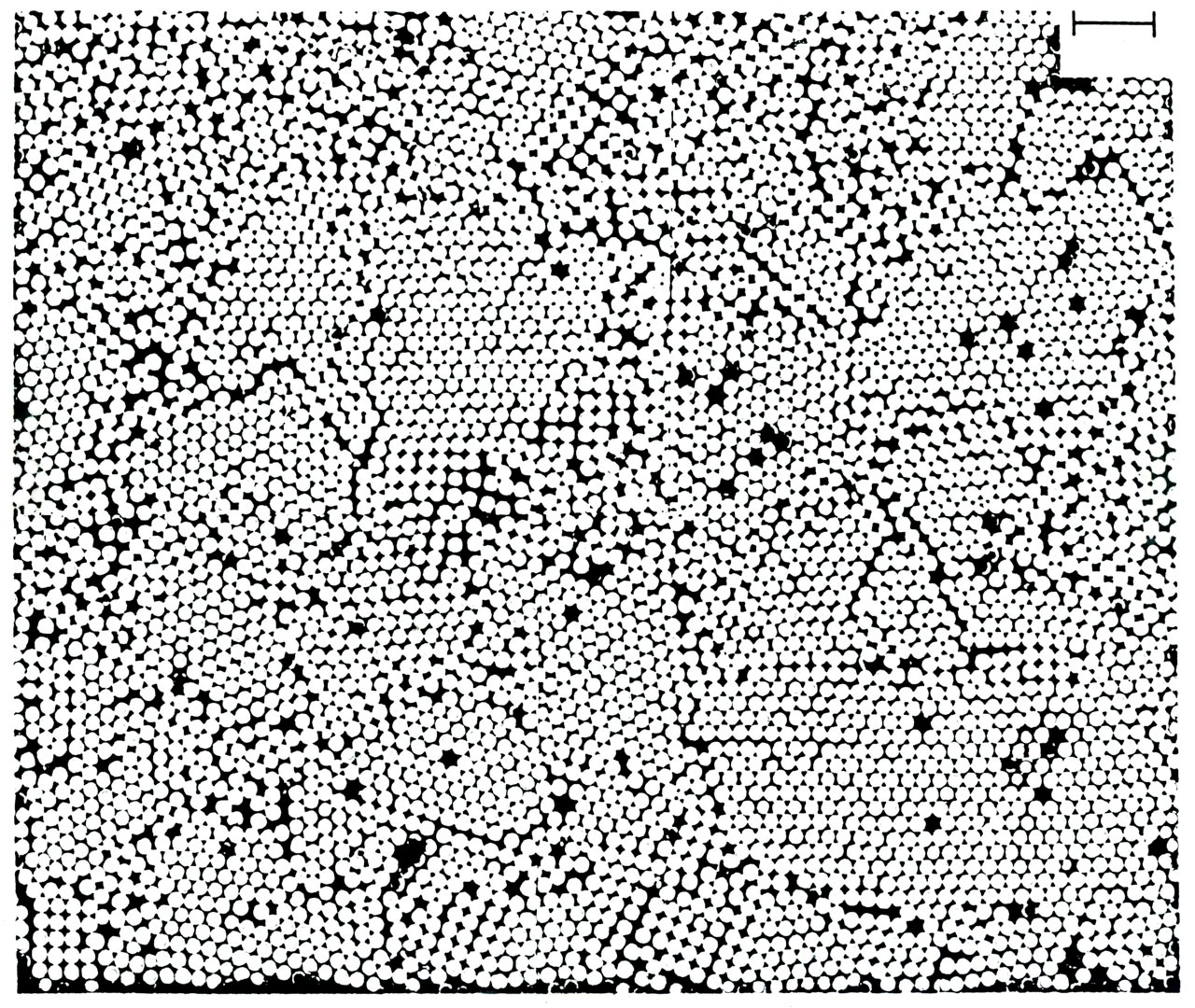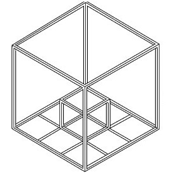Crystal structure From
Wikipedia, the free encyclopedia In
mineralogy and
crystallography, crystal structure is a unique arrangement of
atoms or
molecules in a
crystalline liquid or
solid. A crystal structure is composed of a pattern, a set of atoms arranged in a particular way, and a lattice exhibiting long-range order and symmetry. Patterns are located upon the points of a
lattice, which is an array of points repeating periodically in three dimensions. The points can be thought of as forming identical tiny boxes, called unit cells, that fill the space of the lattice. The lengths of the edges of a unit cell and the angles between them are called the
lattice parameters. The
symmetry properties of the crystal are embodied in its
space group.

SEM micrograph of surface of a
colloidal crystal. Structure and morphology consists of ordered
crystallites,
grains or domains of particles as well as interdomain
lattice defects in the form of
grain boundaries.

 SEM micrograph of surface of a colloidal crystal. Structure and morphology consists of ordered crystallites, grains or domains of particles as well as interdomain lattice defects in the form of grain boundaries.
SEM micrograph of surface of a colloidal crystal. Structure and morphology consists of ordered crystallites, grains or domains of particles as well as interdomain lattice defects in the form of grain boundaries.
Comments
Post new comment